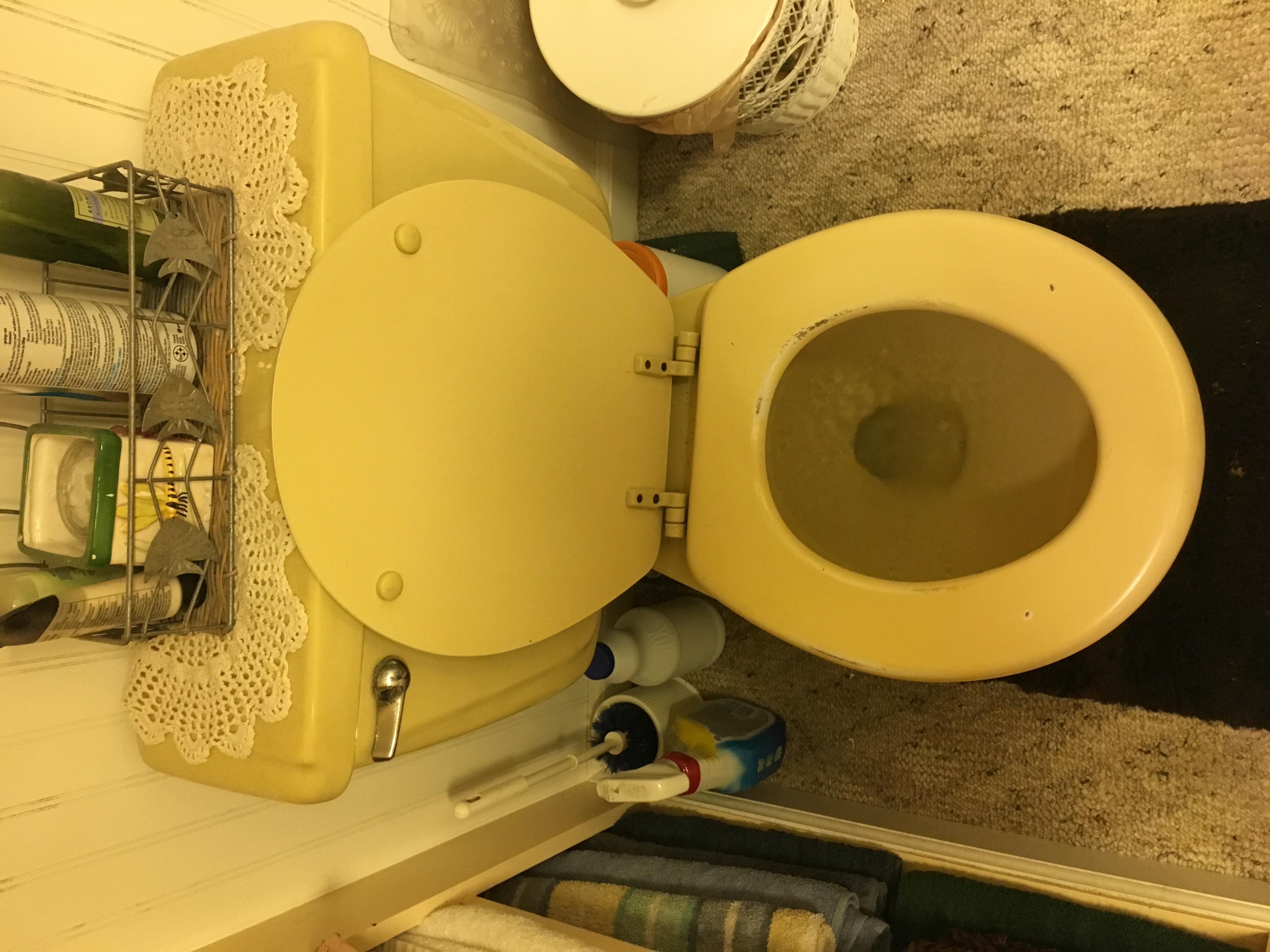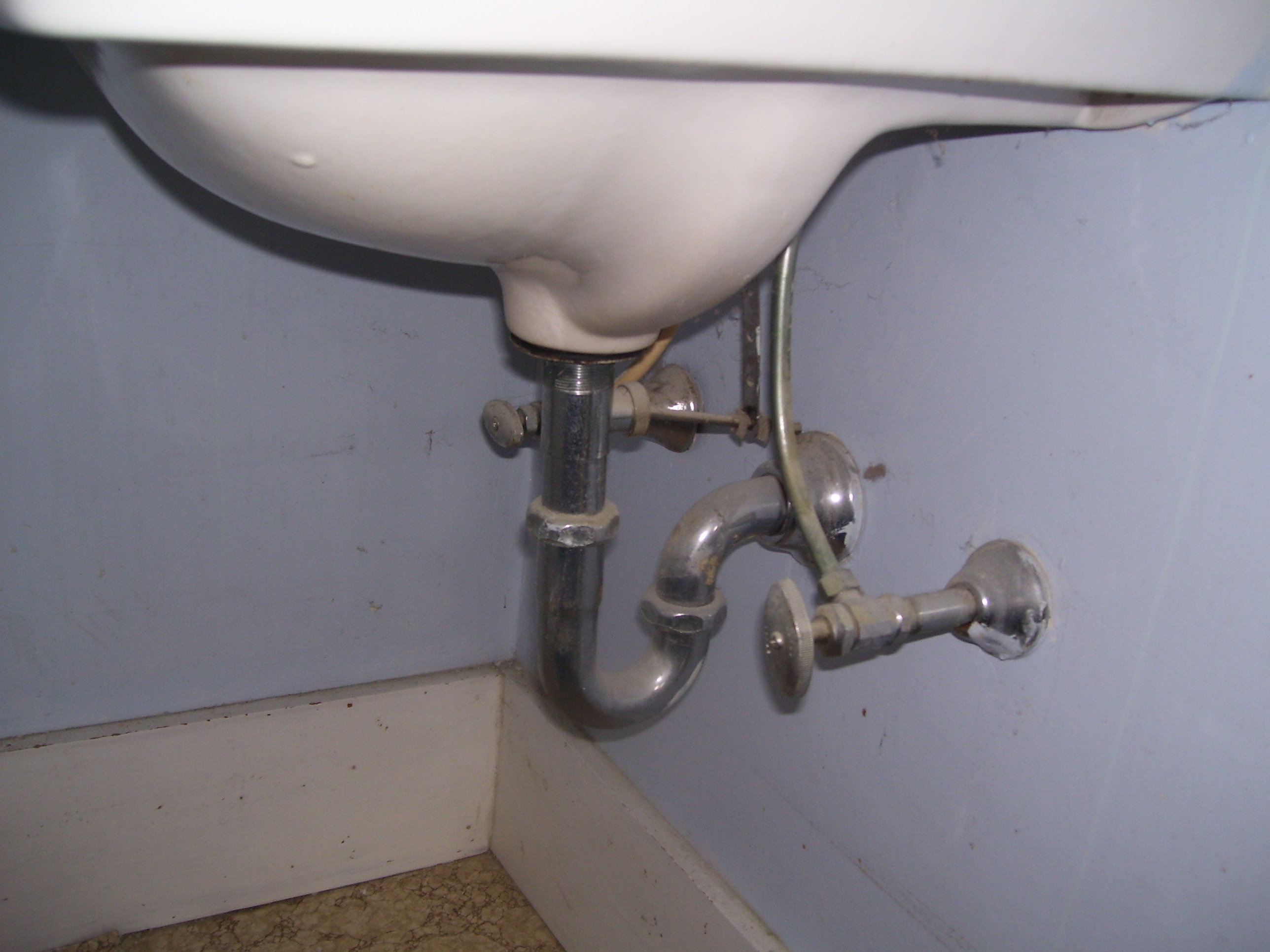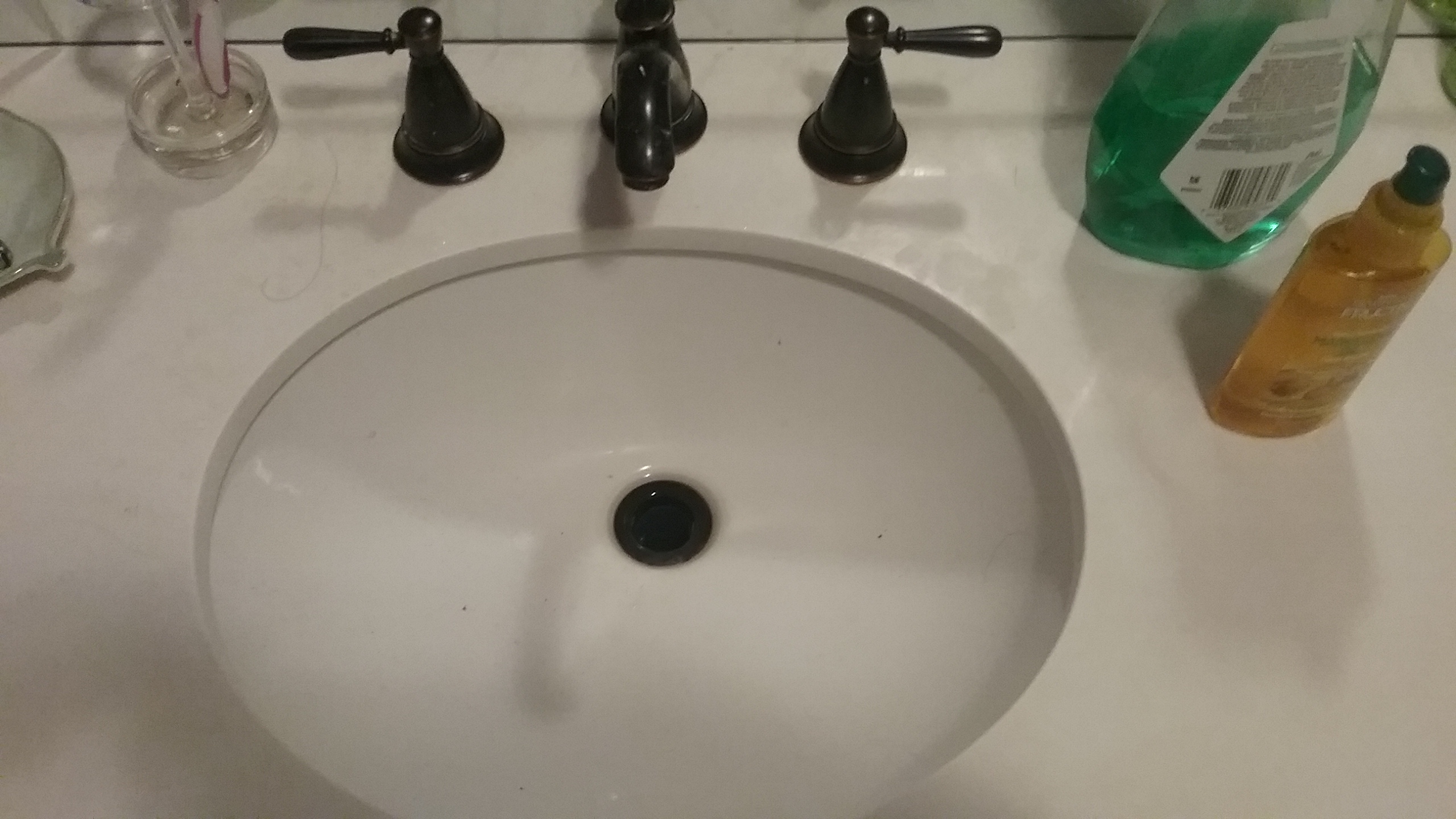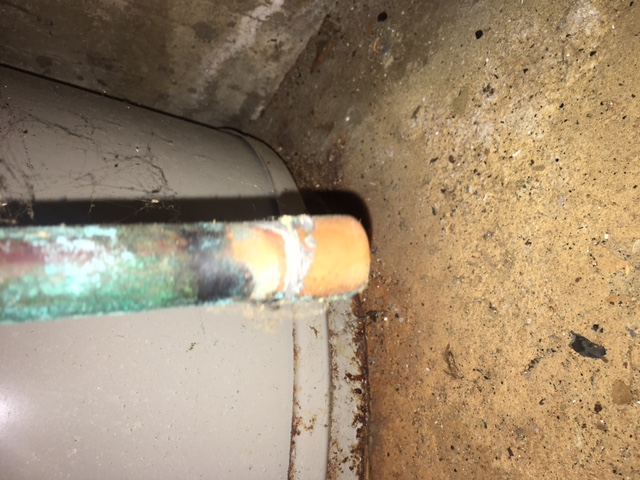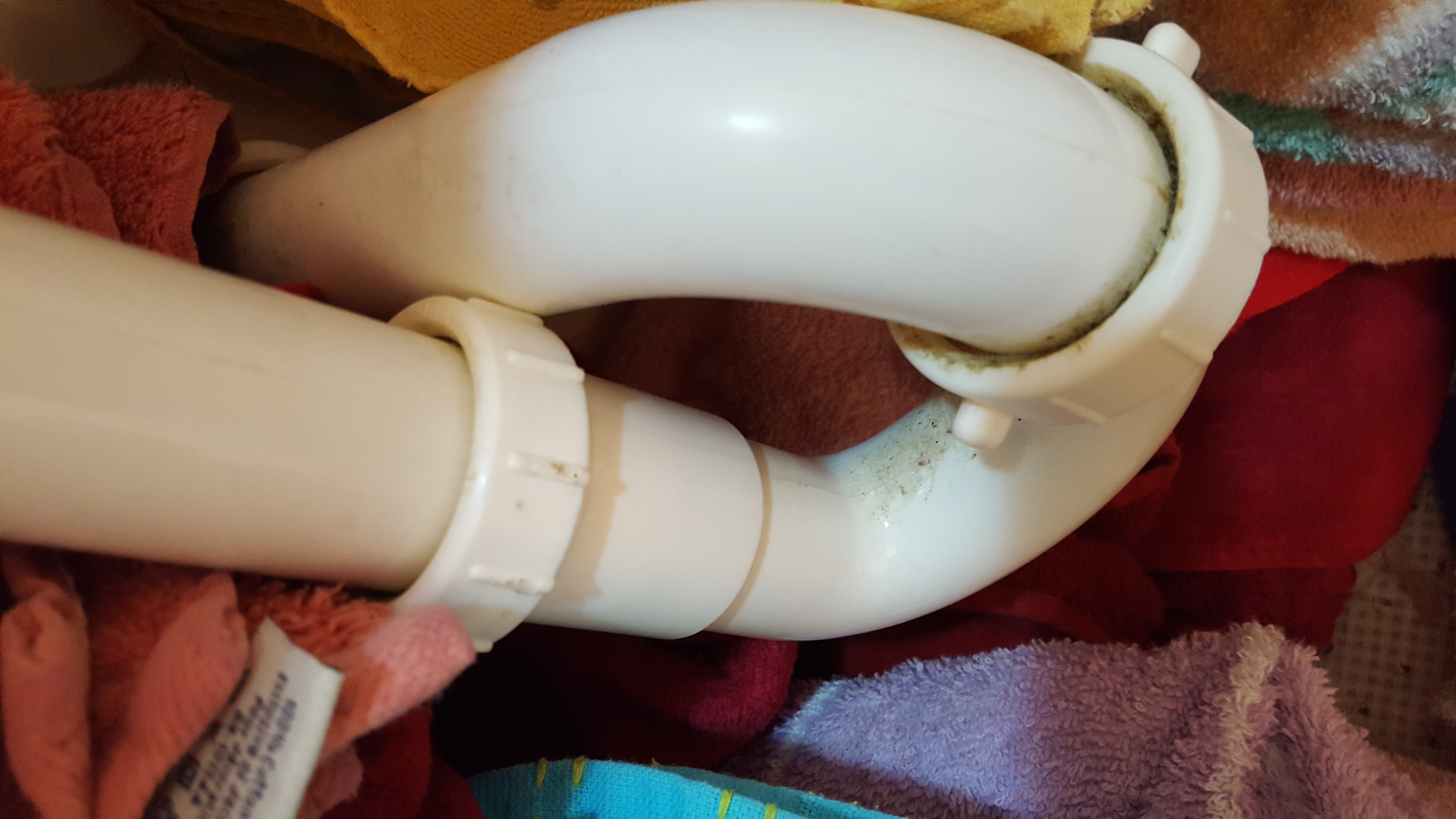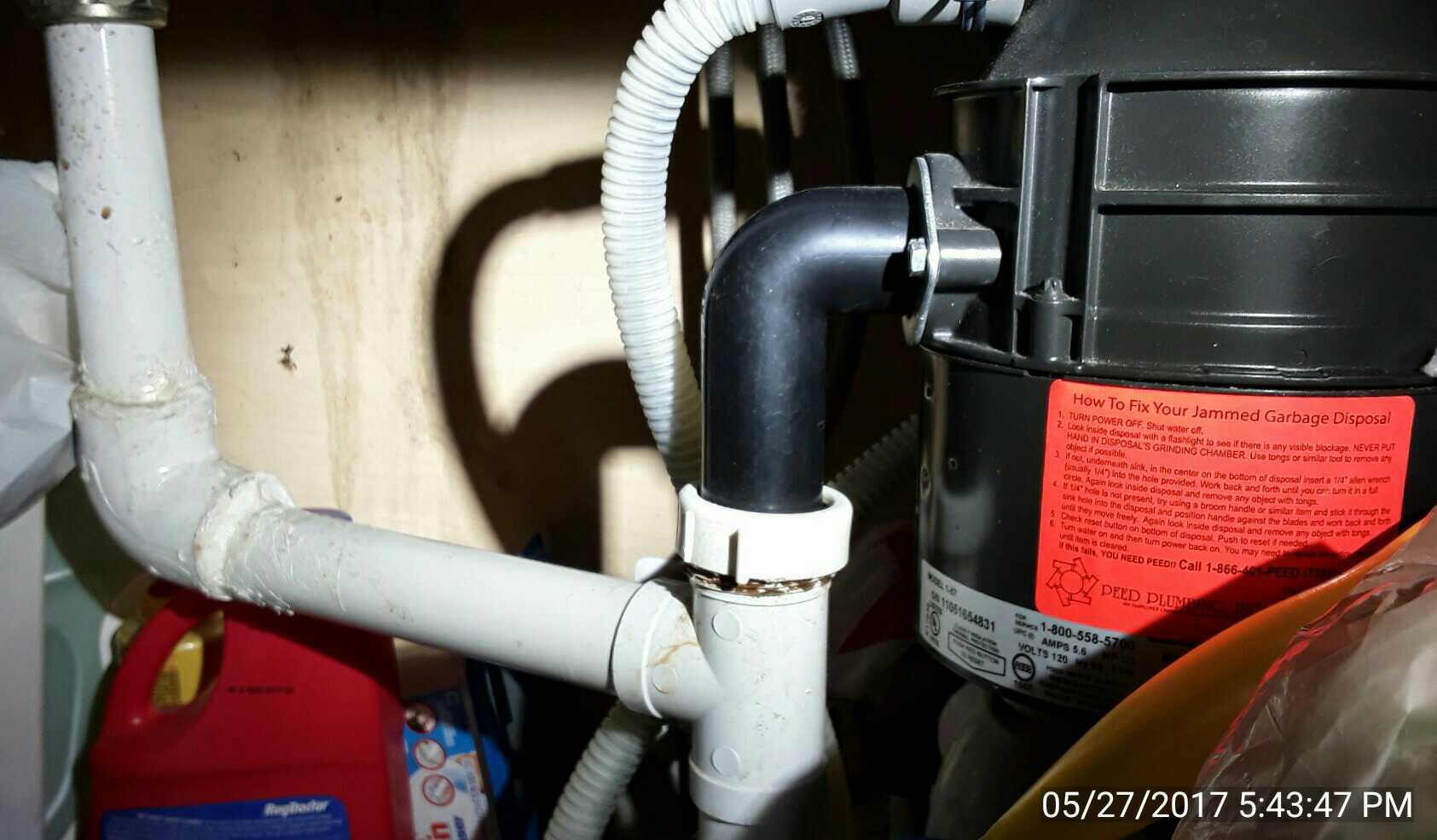A conventional septic absorption field consists of several key components. First you have the plumbing system which is vented and exists the house via a main drain line. This line ties into the septic tank, which then flows into perforated drain lines that are installed on top of drainage gravel, then covered to allow the wastes to leech into the field.
In this picture there is a toilet. It flushes and cycles properly. The toilet has the proper clearances from all sides. When I pushed on the side of it with my leg it didn’t move or have any give to it. It is secured properly.
The photo above depicts the P-trap of the lavatory in the half bathroom located on the first floor. The trap is of adequate size (1-1/2 inches) and materials (stainless steel). There is no leaking or water staining to indicate past leaking.
For this essay I chose the article titled “InterNACHIs Drone Law Primer for Home Inspectors”. I found the very informative, and was thinking about using a drone for roof inspections. I don’t think I will, seems like a to go threw to get the license and register the drone.
I chose the picture of the trap that is labeled. I have learned that this is a p-trap which is a permitted trap. In the image the tailpiece goes into the inlet. The trap seal has to be a minimum of 2 inches but no more than 4 inches.
The Bathroom sink (lavatory) has a P-trap with proper size. The hot and cold water shut off valves are also present. There should never be an S-trap as they often can allow sewer gases to enter the home, these gases can be poisonous or explosive.
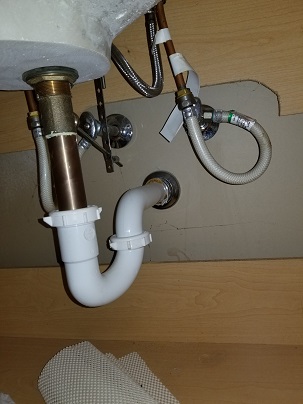
Backflow is the flow of liquids or substances into the pipes of a potable water supply from a downstream source or sources other than the intended source. One way to prevent this is with the presence of an Air Gap
the heater has a drain valve, has a TPR valve at the top connected to a drainage system directed to the overflow collector tray and has a closing valve for its maintenance is in a place of easy access for its replacement or maintenance
an inspector should check that the sinks have water valves in each of their pipes (cold and hot water) and that they do not show signs of leakage should check the drainage that is not dense and that has a trap which must be 1 1 / 2 inches and no stains or signs of leakage the faucet should not be loose and should not have dripping can open the key to check that the pressure is adequate and that water flows through the drainage and there is no stagnation,
The hot water tank shall be installed after checking the tank and its size
The tank is placed on a grade and is mounted on the inner or outer wall
The electricity is then connected to the required temperature
The tank is suspended carefully and with great accuracy
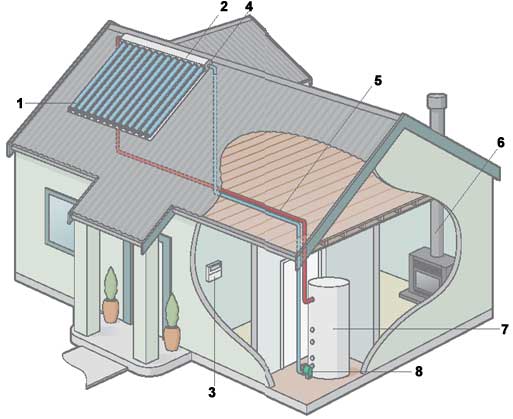
I have learned how to install plumbing and check the water pipes
And the method of installation of hot water tank
I learned how to install an external water pump and extend the pipes
I learned how to install a bathtub
Thank you
Photo of master bath lavatory:
Hot and cold water faucets are correctly oriented with Hot on the left and Cold on the right. This unit is missing it’s stopper drain and is therefore in need of correction. Water pressure was sufficient and showed no discernible loss when both lavatory faucet and shower were running simultaneously.
Article: “Backflow Prevention” by Nick Gromicko and Kenton Shepard
In this article I got a stronger definition and understanding of the importance of backflow prevention. “Backflow is the reversal of the normal and intended direction of water flow in a water system. " This is a particularly bad situation when dealing with the possible contamination of potable water by waste water. The conditions under which this can occur are “back-pressure”, the reverse of flow when demand usage is greater than the supply pressure, and " back-siphonage”, caused by negative pressure in the supply piping.
While inspecting the Hot water tank I observed an improperly installed TPR valve. The valve drop pipe is capped with a copper fitting secured by soldering. Near the valve connection I observed signs of leaking around the threads. This is a dangerous condition and needs to be inspected and repaired by a qualified plumber.
My essay is on the diagram for a gas water heater. Gas water heaters are prone to malfunction and can cause dangerous conditions in a home therefore should be inspected. Newer models tend to wear out at a much faster rate due to governments efficiency requirement therefore should be given a replacement expectation of 3-5 years.
This is the p-trap below a bathroom sink. The trap keeps water in it to seal sewer odors in the waste system and prevent them from entering the home. There was no evidence of any leaks at the time of the inspection.
The photo reveals one of the most creative plumbing repair jobs that I have ever seen by a homeowner. Siclicone caulk was used to connect the sections of pipe together. Additionally, there is no P-trap on the sink as well.
I was interested to discover that gas hot water heaters often contained a helix in the baffle that may have chunks break off and settle in the bottom of the tank. Also, they must be 18" off of the ground.
I read the article “Greywater Inspection”. Greywater is waste water from showers, sinks, and tubs but not from toilets. Waste water that has contacted fecal matter such as in toilets, is called black water. Greywater is not potable but can be used in irrigation systems and for flushing toilets, occasionally it can be purified and used to wash clothes. Some say using greywater can spread disease others say that some household water does not have to be potable and using greywater is more efficient.
This fixture is commonly known as a urinal. It is NOT for defecation as Ben G pointed out in his video presentation on fixtures. This urinal appears to be in satisfactory condition. It felt like it was securely mounted to the wall independently from the plumbing pipes(not supported by them!), it flushed and drained adequately and appears to have waterproof surfaces on the adjoining surfaces that meet good practice(over 4’ high from floor, over 2’ past the front lip and over 2’ from the sides). The waterproof surfaces appear to be in smooth cleanable condition and do not show signs of water damage. The caulking between the fixture and wall(waterproof surface) appeared to be cracked. I would recommend repair by a qualified professional.
